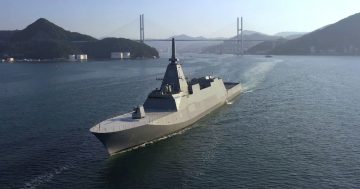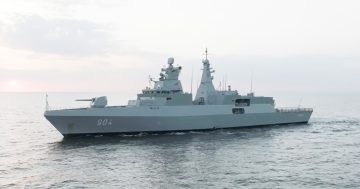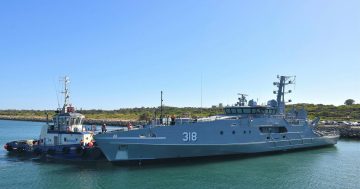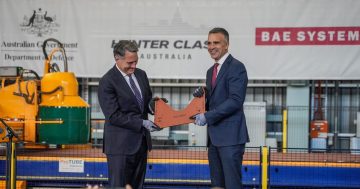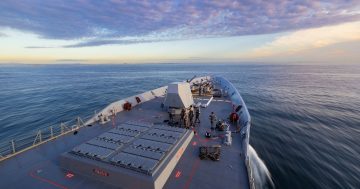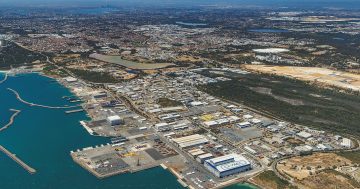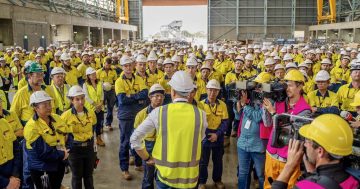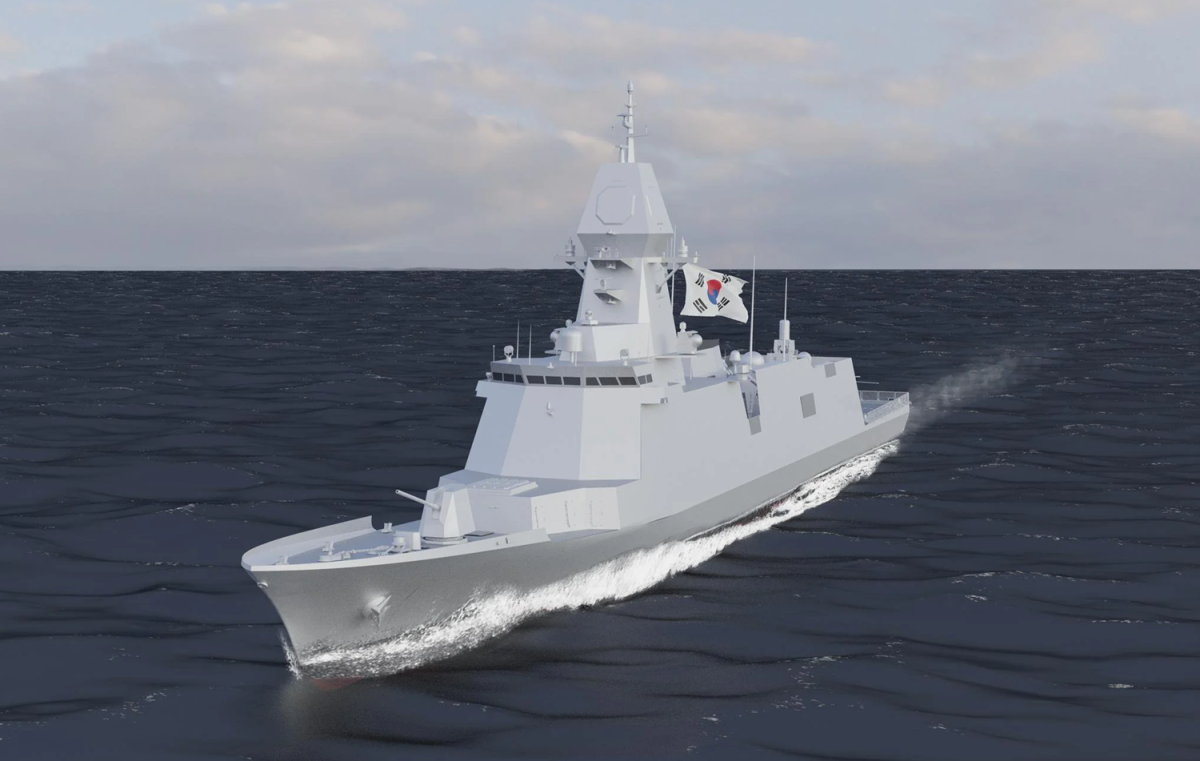
Concept art of the Korean FFX-III frigate. Image: ROK Navy.
A request for information (RFI) has reportedly been issued to industry for the proposed $10 billion fleet of up to 11 general purpose frigates for the Royal Australian Navy (RAN), with an initial response due by mid-June.
One of the major initiatives outlined in the Federal Government’s Enhanced Lethality Surface Combatant Fleet response to the independent analysis of the RAN’s surface combatant fleet was to reduce the number of large Hunter-class frigates and Arafura-class offshore patrol vessels it was planning, and instead pursue a rapid acquisition of general purpose frigates.
The RFI contains a list of basic requirements for the vessels, and is reportedly seeking from industry a construction plan outlining build locations, schedules and preliminary costings for the first three ships to be delivered to the RAN by 2034.
The government’s “low-risk approach” to its plan to acquire new general purpose frigates appears, on face value at least, to be a wise one.
But if you look closer, it not only goes against the government’s mantra of trying to build up Australia’s defence industry, but it actually introduces its own set of risks.
First, nothing in defence procurement is truly low-risk, especially when a project is fast-tracked like this one. As Michael Shoebridge points out in a recent Strategic Analysis Australia post, the government is trying to deliver “ships on a timeline that Defence struggles to achieve when buying office furniture, let alone 11 missile-equipped warships”.
The RFI was reportedly sent to five shipbuilders – Mitsubishi Heavy Industries in Japan, Spain’s Navantia, TKMS from Germany, and two companies from South Korea, Hanwha Ocean and Hyundai – all of which have extensive shipbuilding experience and an existing frigate design already in construction or service.
But this ‘’off-the-shelf’’ philosophy where the ships are built to a configuration that is already being built for someone else can also be fraught with trouble if not executed properly, especially where the RAN’s requirements may not align with those of the original customer for the ships.
Some of these requirements, such as the language used for onboard signage, would be relatively easy to change during construction.
Things that are a little harder to change include various safety and certification standards such as fire suppression and damage control systems, the number of lifeboats a ship carries, ammunition storage, and food and provisions storage.
Then some even harder things might include the height and width of water-tight doors and passageways, and the size of sleeping racks and bathrooms, galley spaces and medical facilities.
Then there are the really hard things, including the language used in the ship’s combat systems, and multiple systems such as propulsion, communications, aircraft handling, sensors and weapons, which, in the baseline design, may not be compatible with those already in RAN service.
None of these are insurmountable. But there comes a point when the more things you change from the baseline ship design, the less ‘’off-the-shelf’’ it becomes, leading to higher costs and longer delivery schedules.
When buying a common baseline design, the acquisition, construction and path to service entry should – in theory – be a relatively smooth one.
But once the ship nears or enters service, it may have little commonality with systems on board other ship classes already in RAN service. This means the navy will need additional sustainment pipelines, different training systems and new parts suppliers, and will have fewer opportunities to move trained crews between ships if required.
For a navy as small as Australia’s, the management of these would be a major burden.
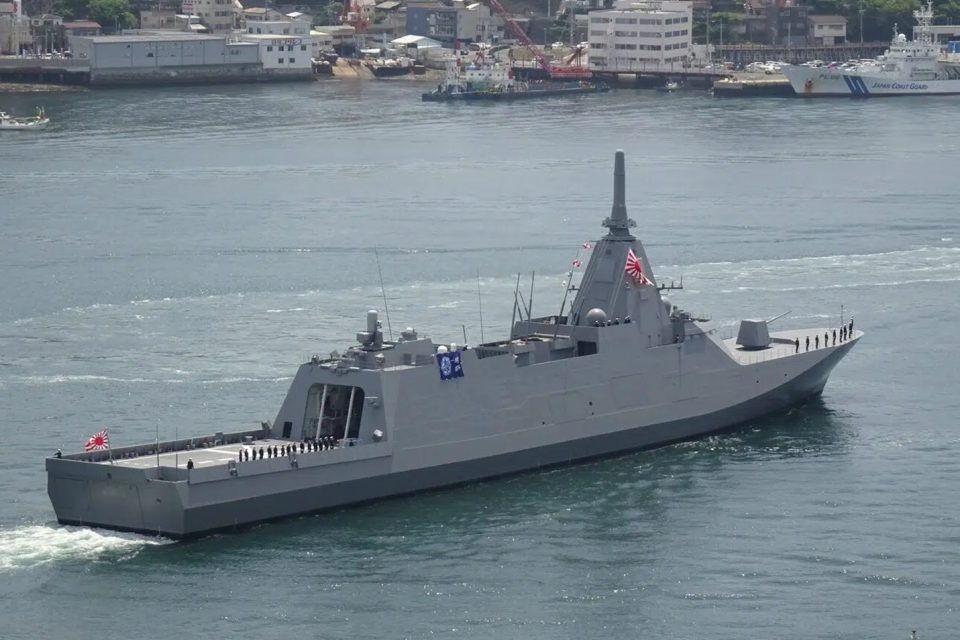

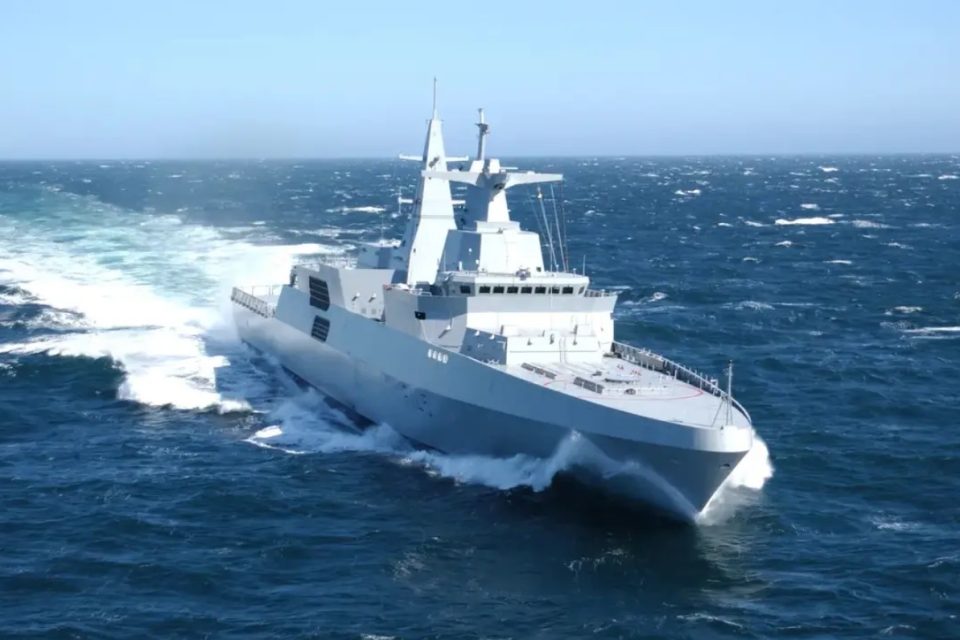
Australia plans to buy three of the new frigates from an overseas shipbuilder before production shifts to a new yard at Henderson in WA, where Austal and other partner companies will build the rest of the fleet.
And there may also be an opportunity for ships four and onwards to incorporate Australian combat systems such as the Saab 9LV, CEA Technologies’ CEAFAR radars, and weapons systems common to ships already in service.
If this is the path taken, the new frigates will essentially be delivered as two separate classes – the first batch of three baseline ships, then the remaining ‘’Australianised’’ vessels.
It may also be possible for the first three vessels to be upgraded with systems common to the rest of the fleet when they undergo their first refit, which usually occurs about a decade after commissioning.
The other consideration is what geo-strategic considerations will come into play. The RAN is already familiar with Navantia’s and TKMS’s design philosophies as it operates ships designed by those companies – Navantia’s F104/Hobart, Juan Carlos I/Canberra and Cantabria/Supply-class ships, and TKMS’s Meko 200/Anzac-class design.
But, while the RAN has never bought Korean or Japanese ships, both of these countries are much bigger trading partners for Australia and are also more likely to be strategic partners in the years ahead.


